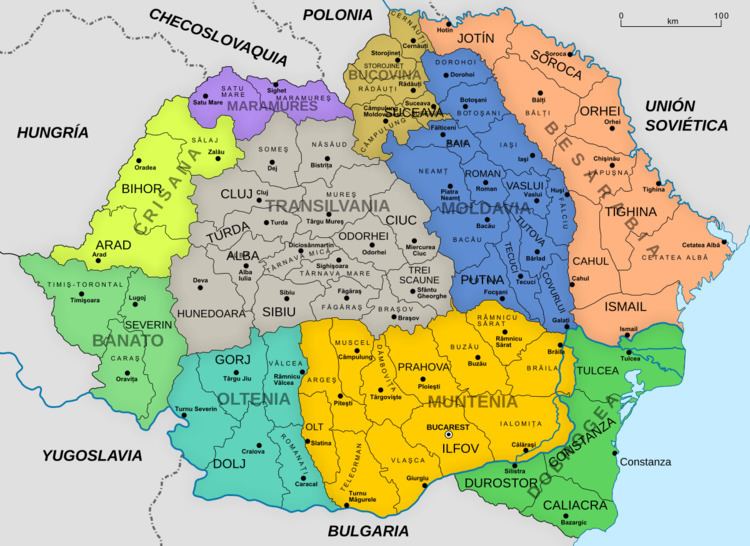 | ||
Hungarian csango dance from moldva
Moldavia (Romanian: Moldova) (also called Western Moldavia or Romanian Moldavia) is a historic and geographical region situated in eastern and north-eastern Romania. Until its union with Wallachia in 1859, the Principality of Moldavia included at various times in its history the regions of Bessarabia (with the Budjak), and the entire Bukovina; the larger part of the former is nowadays the independent state of Moldova, while the rest of it and the larger, northern part of Bukovina form parts of Ukraine.
Contents
The Romanian region itself consists of eight counties (or seven, if Suceava County - most of it in southern Bukovina - is not included), spanning over 19% of Romania's territory. Most of Moldavia (6 out of 8 counties) is part of the Nord-Est development region, while the two southern counties are located in Sud-Est development region.
Moldavian dialect
The delimitation of the Moldavian dialect, as with all other Romanian dialects, is made primarily by analyzing its phonetic features and only marginally by morphological, syntactical, and lexical characteristics.
The Moldavian dialect is the representative of the northern grouping of Romanian dialects and has influenced the Romanian spoken over large areas of Transylvania.
The Moldavian and the Wallachian dialects are the only two that have been consistently identified and recognized by linguists. They are clearly distinct in dialect classifications made by Heimann Tiktin, Mozes Gaster, Gustav Weigand, Sextil Pușcariu, Sever Pop, Emil Petrovici, Romulus Todoran, Ion Coteanu, Alexandru Philippide, Iorgu Iordan, Emanuel Vasiliu, and others, whereas the other dialects have been considerably more controversial and difficult to classify.
The Moldavian dialect is not synonymous with Moldovan language. The latter is another term for the Romanian language as used in the Republic of Moldova. The border between Romania and the Republic of Moldova does not correspond to any significant isoglosses to justify a dialectal division; phonetics and morphology (which define dialectal classifications) are identical across the border, whereas lexical differences are minimal.
Administrative divisions
The area of the region is 46,173 km2 (17,827 sq mi) and covers 8 counties (Romanian: judeţ), in eastern and northeastern Romania: Bacău, Botoșani, Galați, Iași, Neamț, Suceava (only southern and eastern parts), Vaslui, and Vrancea.
Population
According to Romanian Census (2011) data, the region has a total population of 4,178,694 inhabitants (20.7% of Romania's population), distributed among the ethnic groups as follows:
The most populous cities (as of 2011 census):
